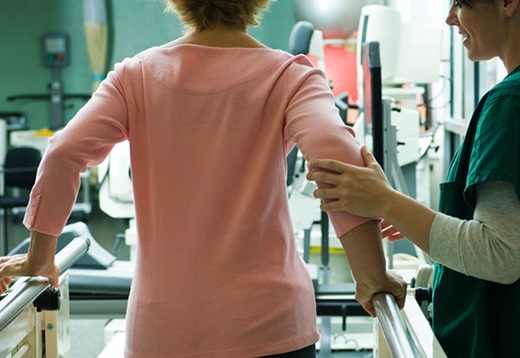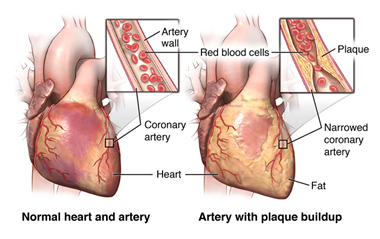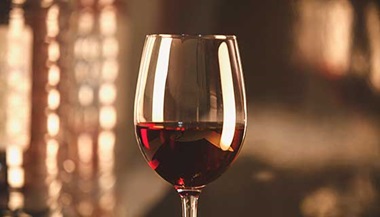New Hope for Stroke Recovery
The good news about stroke: More people are surviving the initial stroke. The bad news about stroke: More people are surviving the initial stroke with disabilities which might have been minimized if they had received the kind of early, intensive physical rehabilitation that researchers find can improve function and reduce long-term disability. In fact, as many as 60 percent are left with diminished use of an arm or leg.

“When we speak about recovery we’re really talking about how the nervous system adapts to the brain missing a part of functioning tissue,” explains Johns Hopkins expert Steven Zeiler, M.D., Ph.D. “We’ve done all we could in the acute period, but the damage is done and it’s irreversible.” The question then becomes, “How do you get the remainder of the nervous system to adapt?” In other words, can we get other parts of the brain to pick up the slack? Turns out that yes, we can.
Retraining the Brain
A groundbreaking Johns Hopkins study from Zeiler and his colleagues confirmed what clinicians have long suspected—we can rewire the brain so that one part takes over functions typically handled by another, now damaged, area.
In studies conducted with mice, the researchers first taught the mice a special way to reach for food. The task is typically directed by a part of the brain called the primary motor cortex, which is involved in physical coordination. Then they gave the mice mild strokes that damaged this motor cortex. As expected, the mice could no longer perform the reaching task with their pre-stroke level of precision. Two days after the stroke, however, researchers began retraining the mice and, after a week, the mice performed the task just as well as before the stroke.
The damaged part of the brain hadn’t recovered, says Zeiler. Instead, another part of the brain called the medial premotor cortex took over. To show that, researchers gave the mice strokes in that part of the brain and saw the reaching ability again disappear. But, once again, the mice relearned the task as yet another part of the brain stepped in to handle the job of the medial premotor cortex.
In a similar study, the researchers found that the earlier retraining started, the better. “If you retrained the mice after a one-day delay they got better, but after a seven-day delay they didn’t improve,” Zeiler says.
Johns Hopkins’ Kata Project, a collaboration between neuroscientists, engineers, animal experts, artists and entertainment industry experts, has designed an immersive experience for post-stroke patients who will try to “swim” as a virtual dolphin named Bandit. Upcoming clinical trials will determine if this unique experience helps patients recover motor function faster than the current conventional treatment of repetitive exercises.
The Power of Stroke Rehab
The take-home message of the research, says Zeiler, is that “early and intense” rehabilitation—even while still hospitalized—is critical in stroke recovery. Unfortunately, that’s not always the standard practice, he says. “As a medical community we need to push for immediate and intense change in rehabilitation.”
Rehab paired with healthy living will help stroke recovery and help prevent a second stroke. If you experience an ischemic stroke (caused by a lack of blood flow to a part of the brain), your doctor will recommend aspirin or another anti-clotting medication, Zeiler says. If you have atrial fibrillation , talk to your doctor about an anticoagulation medication such as warfarin. Other smart steps to take:
- Maintain healthy blood pressure and cholesterol levels , which differ depending on your age and medical history.
- Eat a Mediterranean-type diet : high in olive oil, legumes, cereals, fruits, and vegetables and low in saturated fat, cholesterol, and sodium.
- Get moderate physical exercise such as brisk walking, jogging, cycling, or swimming for 30 to 60 minutes at least four days a week.
- Aim for a healthy weight , including a waist circumference of less than 31.5 inches for women and 37 for men.
Research Shows Another Potential Key to Stronger Stroke Recovery
In the research, Johns Hopkins expert Steven Zeiler, M.D., Ph.D. and colleagues also found that lower levels of a protein called parvalbumin indicated that the premotor cortex had rewired after stroke. Parvalbumin marks the activity of a special class of nerve cells called inhibitory interneurons. Low levels of parvalbumin, and therefore lowered levels of inhibitory activity, is thought to help uninjured parts of the brain take over the injured parts, say researchers. This finding suggests that reducing inhibition in certain parts of the uninjured post-stroke brain (perhaps by using different medications and/or electrical stimulation) might promote recovery.




